The Seven Sisters are a group of seven liberal arts colleges in the Northeastern United States that are historically women's colleges. Barnard College, Bryn Mawr College, Mount Holyoke College, Smith College, and Wellesley College are still women's colleges. Vassar College is currently a coeducational college and Radcliffe College was absorbed in 1999 by Harvard College and now offers programs in advanced study.
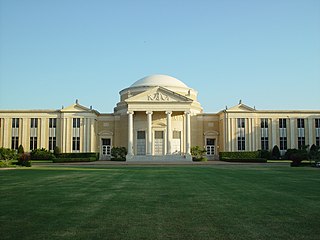
A seminary, school of theology, theological seminary, or divinity school is an educational institution for educating students in scripture and theology, generally to prepare them for ordination to serve as clergy, in academics, or mostly in Christian ministry.

Catharine Esther Beecher was an American educator known for her forthright opinions on female education as well as her vehement support of the many benefits of the incorporation of kindergarten into children's education. She published the advice manual The American Woman's Home with her sister Harriet Beecher Stowe in 1869. Some sources spell her first name as "Catherine".

Mixed-sex education, also known as mixed-gender education, co-education, or coeducation, is a system of education where males and females are educated together. Whereas single-sex education was more common up to the 19th century, mixed-sex education has since become standard in many cultures, particularly in western countries. Single-sex education remains prevalent in many Muslim countries. The relative merits of both systems have been the subject of debate.

Emma Willard was an American female education activist who dedicated her life to education. She worked in several schools and founded the first school for women's higher education in the United States, the Troy Female Seminary in Troy, New York. With the success of her school, Willard was able to travel across the country and abroad to promote education for women. The seminary was renamed the Emma Willard School in 1895 in her honor.

Mary Mason Lyon was an American pioneer in women's education. She established the Wheaton Female Seminary in Norton, Massachusetts, in 1834. She then established Mount Holyoke Female Seminary in South Hadley, Massachusetts, in 1837 and served as its first president for 12 years. Lyon's vision fused intellectual challenge and moral purpose. She valued socioeconomic diversity and endeavored to make the seminary affordable for students of modest means.
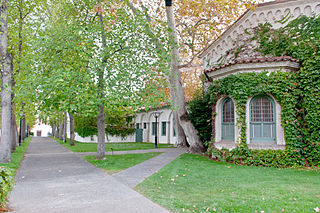
Women's colleges in higher education are undergraduate, bachelor's degree-granting institutions, often liberal arts colleges, whose student populations are composed exclusively or almost exclusively of women. Some women's colleges admit male students to their graduate schools or in smaller numbers to undergraduate programs, but all serve a primarily female student body.

Single-sex education, also known as single-gender education and gender-isolated education, is the practice of conducting education with male and female students attending separate classes, perhaps in separate buildings or schools. The practice of single-sex schooling was common before the 20th century, particularly in secondary and higher education. Single-sex education is practiced in many parts of the world based on tradition and religion; Single-sex education is most popular in English-speaking countries (regions) such as Singapore, Malaysia, Ireland, the United Kingdom, Hong Kong, South Africa and Australia; also in Chile, Israel, South Korea and in many Muslim majority countries. In the Western world, single-sex education is primarily associated with the private sector, with the public (state) sector being overwhelmingly mixed sex; while in the Muslim world public schools and private schools are sex-segregated. Motivations for single-sex education range from religious ideas of sex segregation to beliefs that the sexes learn and behave differently. As such, they thrive in a single-sex environment. In the 19th century, in Western countries, single-sex girls' finishing schools, and women's colleges offered women a chance of education at a time when they were denied access to mainstream educational institutions. The former was especially common in Switzerland, the latter in the U.S. and the U.K., pioneers in women's education.
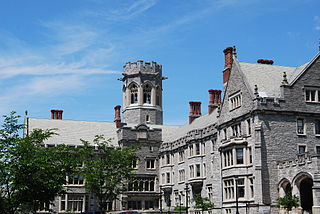
Emma Willard School, originally called Troy Female Seminary and often referred to simply as Emma, is an independent university-preparatory day and boarding school for young women, located in Troy, New York, on Mount Ida, offering grades 9–12 and postgraduate coursework.
The following is a timeline of women's colleges in the United States. These are institutions of higher education in the United States whose student population comprises exclusively, or almost exclusively, women. They are often liberal arts colleges. There are approximately 35 active women's colleges in the U.S. as of 2021.
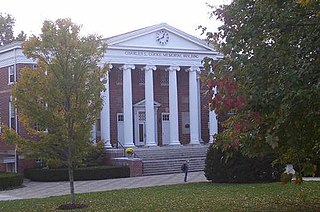
Women's colleges in the Southern United States refers to undergraduate, bachelor's degree–granting institutions, often liberal arts colleges, whose student populations consist exclusively or almost exclusively of women, located in the Southern United States. Many started first as girls' seminaries or academies. Salem College is the oldest female educational institution in the South and Wesleyan College is the first that was established specifically as a college for women, closely followed by Judson College in 1838. Some schools, such as Salem College, offer coeducational courses at the graduate level.

Women's colleges in the United States are private single-sex U.S. institutions of higher education that only admit female students. They are often liberal arts colleges. There are approximately 26 active women's colleges in the United States in 2024, down from a peak of 281 such colleges in the 1960s.

The Litchfield Female Academy in Litchfield, Connecticut, founded in 1792 by Sarah Pierce, was one of the most important institutions of female education in the United States. During the 30 years after its opening the school enrolled more than 2,000 students from 17 states and territories of the new republic, as well as Canada and the West Indies. Some 1,848 students known to have attended the school have been identified through school lists, diaries and journals, correspondence, as well as art and needlework done at the school. Many more, unidentified to date, attended, especially before 1814, when formal attendance lists were first kept. The longevity of the school, the size of the enrollments, the wide geographic distribution of the student body, the development of the curriculum and the training of teachers, all distinguish it from the numerous other female academies of the Early Republic. The young women were exposed to ideas and customs from all the relatively isolated parts of the new nation, developing a more national perspective than most Americans of the period.
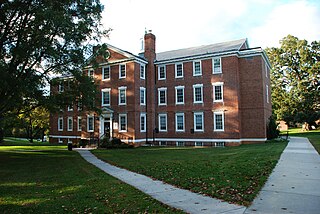
Men's colleges in the United States are primarily those categorized as being undergraduate, bachelor's degree-granting single-sex institutions that admit only men. In the United States, male-only undergraduate higher education was the norm until the 1960s. The few remaining well-known men's colleges are traditional independent liberal arts colleges, though at present the majority are institutions of learning for those preparing for religious vocations.
In the early colonial history of the United States, higher education was designed for men only. Since the 1800s, women's positions and opportunities in the educational sphere have increased. Since the late 1970s and early 1980s, women have surpassed men in number of bachelor's degrees and master's degrees conferred annually in the United States and women have continuously been the growing majority ever since, with men comprising a continuously lower minority in earning either degree. The same asymmetry has occurred with Doctorate degrees since 2005 with women being the continuously growing majority and men a continuously lower minority.

Shimer College was founded in 1852, when the pioneer town of Mt. Carroll, Illinois, lacking a public school, incorporated the Mt. Carroll Seminary with no land, no teachers, and no money for this purpose.

Frances Shimer, born Frances Ann Wood, was an American educator. She was the founder of the Mount Carroll Seminary, which later became Shimer College, in Mount Carroll, Illinois. She was also the sole proprietress of the school from 1870 to her retirement in 1896.
The Mount Carroll Seminary was the name of Shimer College from 1853 to 1896. The Seminary was located in Mount Carroll, Illinois, in the United States. A pioneering institution in its time and place, the Mount Carroll Seminary served as a center of culture and education in 19th-century northwestern Illinois. Despite frequent prognostications of failure, it grew from 11 students in a single room to more than 100 students on a spacious campus with four principal buildings. Unusually for the time, the school was governed entirely by women, most notably the founder Frances Wood Shimer, who was the chief administrator throughout the Seminary's entire existence.
The Bethlehem Female Seminary was established in 1742 in Germantown, Philadelphia and was the first Protestant boarding school for girls in what became the United States. The Bethlehem Female Seminary later became known as the Moravian Female Seminary, and in 1863 the seminary was established as Moravian College.

Mary Mortimer was a British-born American educator. She served as principal of the Milwaukee Female College and other women's educational institutions.













